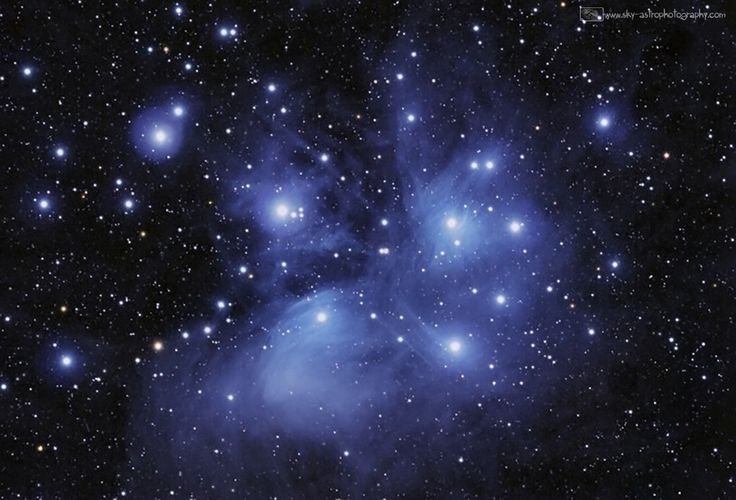
The night sky has always captivated humanity, and among its many wonders, the Pleiades star cluster stands out as a beacon of beauty and mystery. Known as the “Seven Sisters,” Pleiades has inspired countless stories, myths, and scientific inquiries throughout history. In this blog post, we’ll explore the uniqueness of Pleiades, its cultural significance, scientific background, and how you can observe this celestial marvel.
The Uniqueness of Pleiades
Pleiades is a star cluster that consists of over 1,000 stars, but only seven are clearly visible to the naked eye. These stars shine brightly in the night sky, making them easy to recognize. The cluster is located approximately 444 light-years away from Earth and is one of the nearest star clusters to our planet. Its distinct blue color indicates that the stars are hot and massive, with most of them being less than 100 million years old.
Pleiades in Various Cultures
Throughout history, Pleiades has inspired many cultures around the world. In Greek mythology, the cluster is associated with the daughters of Atlas, known as the “Seven Sisters.” Each sister has her own story, and their collective presence in the sky has been a source of inspiration for poets and artists alike.
In Maori culture, Pleiades is known as “Matariki,” marking the start of the new year. The rising of Matariki in the winter sky signals a time for reflection, celebration, and the planting of new crops. Similarly, many indigenous cultures have linked the appearance of Pleiades with agricultural cycles and seasonal changes.
Observing Pleiades
If you’re eager to see Pleiades for yourself, the best time to observe this star cluster is during the months of November and December. Look towards the western sky after sunset, and you’ll be greeted by the stunning sight of the Seven Sisters twinkling against the backdrop of the night.
You don’t need a telescope to enjoy Pleiades, as it is easily visible to the naked eye. However, using binoculars or a telescope can enhance your experience, allowing you to see more stars within the cluster.
The Science Behind Pleiades
Pleiades is not just a beautiful sight; it is also a subject of scientific study. Astronomers have used this star cluster to learn more about the evolution of stars and the dynamics of star formation. The cluster is relatively young, and its stars are still in the early stages of their life cycles.
The blue color of the stars in Pleiades indicates that they are hot and massive, with temperatures reaching thousands of degrees. This makes them much brighter than our Sun, and their luminosity allows us to see them from such great distances.
Pleiades in Art and Literature
The beauty of Pleiades has inspired countless artists and writers throughout history. From ancient poetry to modern art, the cluster continues to ignite creativity and wonder in the human spirit. Many works of art depict the Seven Sisters, capturing their ethereal glow and the stories they tell.
Fun Facts About Pleiades
Here are some fun facts about Pleiades that you might find interesting:
The name “Pleiades” comes from the Greek word for “to sail,” as the cluster was used by ancient sailors for navigation.
The cluster is also known as the “Seven Sisters” because of the seven brightest stars that are easily visible.
In some cultures, Pleiades is associated with agricultural cycles and seasonal changes, marking important times for planting and harvesting.
